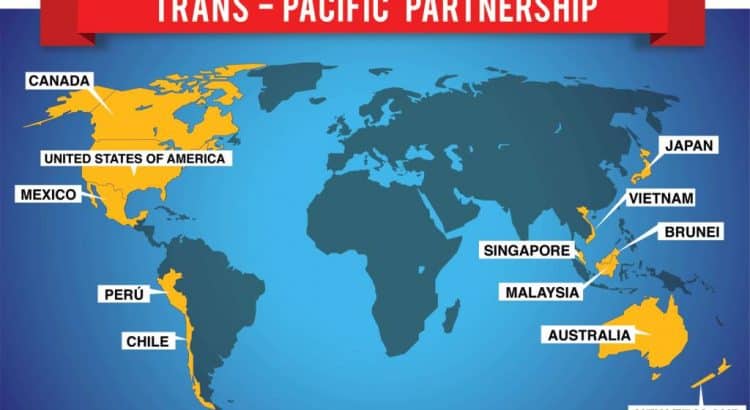TPP means Trans-Pacific Partnership
TPP, or the Trans Pacific Partnership Agreement (TPPA), was a trade agreement between Australia, Brunei, Canada, Chile, Japan, Malaysia, Mexico, New Zealand, Peru, Singapore, the United States of America and Vietnam
The finalized proposal was signed on 4 February 2016 in Auckland, New Zealand, concluding seven years of negotiations. It currently cannot be ratified due to U.S. withdrawal from the agreement on 23 January 2017. The former Obama administration claimed that the agreement aimed to promote economic growth; support the creation and retention of jobs; enhance innovation, productivity and competitiveness; raise living standards; reduce poverty in the signatories countries; and promote transparency, good governance, and enhanced labor and environmental protections. The TPP contains measures to lower both non-tariff and tariff barriers to trade, and establish an investor-state dispute settlement (ISDS) mechanism.
The TPP began as an expansion of the Trans-Pacific Strategic Economic Partnership Agreement (TPSEP or P4) signed by Brunei, Chile, New Zealand, and Singapore in 2005. Beginning in 2008, additional countries joined the discussion for a broader agreement: Australia, Canada, Japan, Malaysia, Mexico, Peru, United States, and Vietnam, bringing the total number of countries participating in the negotiations to twelve. Current trade agreements between participating countries, such as the North American Free Trade Agreement, will be reduced to those provisions that do not conflict with the TPP or provide greater trade liberalization than the TPP. The Obama administration considered the TPP a companion agreement to the proposed Transatlantic Trade and Investment Partnership (TTIP), a broadly similar agreement between the U.S. and the European Union.
Source: Wikipedia
More about Trans-Pacific Partnership:
